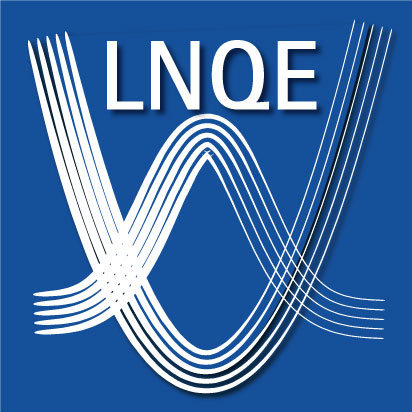Digital methods for the prediction of sorption properties of metal-organic frameworks
| Leitung: | Prof. Dr. Nadja-Carola Bigall, LUH, Institute for Physical and Electrochemistry |
| Team: | Adrian Hannebauer |
| Jahr: | 2020 |
Metal-organic frameworks (MOFs) are an important class of materials, with typical applications in sorption, separation and catalysis. These applications rely on the controlled nanoporosity of these substances. MOFs possess a modular construction, based on inorganic metal-oxide nodes and organic linkers, resulting in an enormous number of possible combinations, and thus of different MOFs. The number of MOFs can furthermore be increased by preparing MOFs containing more than one linker. In “true” mixed linker MOFs, the different linkers are statistically distributed throughout the framework. Then the general chemical character of the MOF can be altered continuously, for example between polar and unpolar, hydrophilic and hydrophobic, acidic to basic etc.
The aim of this project is to find general correlations between the chemical character of MOFs, established by employing different linkers in mixed-linker MOFs, and their chemisorption properties. The latter shall be established by vapour sorption measurements using a variety of probe molecules. Mixed-linker MOFs of the UiO-66 typeshall be synthesized with a variety of terephthalic acid derivatives. These linkers carry a variety of 1 to 4 (according to the number of free positions on the aromatic ring) organic substituents, including -H, -CH3, -NH2, -NO2, -OH, -OCH3, -F, -Cl, -Br. As adsorptives for the sorption measurements water as well as alkanes, alkenes alcohols and ethers of similar chain lengths shall be used (e.g. n-propane, i-propane, propene, n-propanol, i-propanol, dimethylether). From the sorption measurements, the relative pressure of the onset of adsorption, the adsorbed amount at p/p0 = 0.5, and the total amount adsorbed are obtained. In selected cases, sorption enthalpies are measured.
The actual experiments will only deal with a limited number of MOFs. For each of those, only a selected set of adsorptives are measured (training set). Computational approaches based on machine learning algorithms will then be used to develop quantitative structure–property relationship (QSPR) based on this training set. These QSPRs can then be used to make predictions about the sorption properties of all the MOFs considered versus all the adsorptives investigated. These predictions will then be verified by selected further investigations on pairs of mixed-linker MOFs and adsorptives. Finally, it will be attempted to develop QSPR “classifiers” which can help to find an ideal MOF for the adsorption of a certain substance or for a certain separation task, e.g. for the industrially highly relevant separation of propane and propene.








